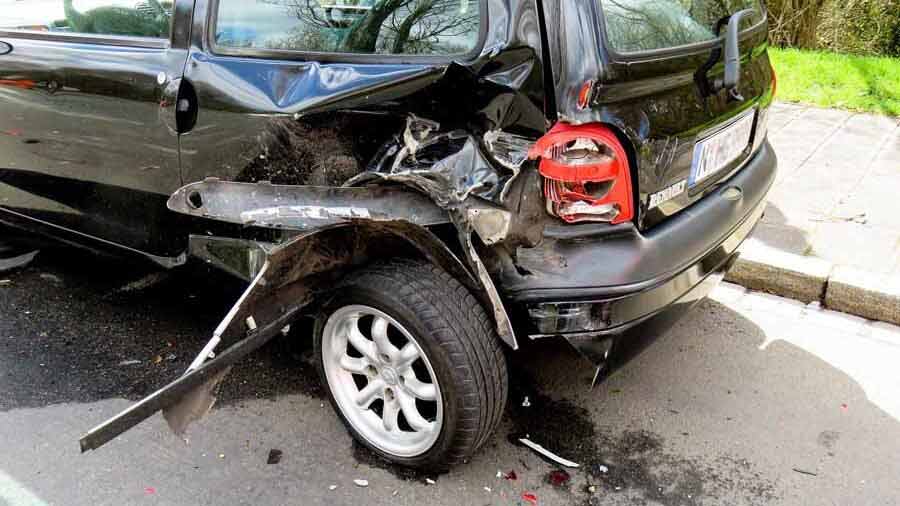For more than a few drivers, it isn’t the miscalculation or mistake leading to the accident that causes the most problems; it is the half dozen or so other mistakes that are made immediately after (or even several months after) the accident that are far more damaging.
The truth is, drivers need to be ready to handle a personal injury claim after an accident. They have to know the types of injuries they are likeliest to face. They have to be at least tangentially familiar with the legal process so they know what to expect, and they have to know where their attorney fits into the process of obtaining fair compensation for their injuries. Anything less invites disaster.
Types of Injuries After a Car Accident
- Pulled Muscles
- Internal Bleeding
- Contusions
- Broken Bones
Typically, most car accident injuries are minor. However, many severe injuries can occur from car accidents that result in the need for medical care. Collisions have a tendency to toss people around inside the car, which leads to knee, head, body and arm impacts with various hard surfaces inside the vehicle.
Blunt Force Trauma
The technical term for the most common car accident injury is “blunt force trauma,” which is an elaborate euphemism for bumps and bruises. Broken bones and contusions are the likeliest result of these kinds of injuries. Less common but potentially far more difficult to recover from, are various injuries to the bones and muscles of the neck and back, sometimes referred to as “whiplash” or “herniated disc.”
Internal Bleeding
More dangerous than a broken bone or pulled muscle is internal bleeding, which is more common than many people might think. The forces at work in even a moderate vehicle impact are immense compared to what the average person can withstand.
Texas Law: What a Personal Injury Lawsuit Involves
Any vehicle accident that involves an injury must be reported to the local police or sheriff as quickly as possible. While other states have what are called “wobbler” laws when it comes to reporting of certain accidents, there is no ambiguity in Texas.
Texas Car Accident Statute Of Limitations
Like many states, Texas has a statute of limitations regarding how much time may elapse between an accident and a plaintiff’s claim for damages arising from injuries or lost property from the crash. In Texas, this statute is two years from the date of the crash.
Comparative Damage Policy
Texas also has a comparative damages policy with regard to accidents where more than one driver share responsibility. Although a pure comparative system would even compensate drivers who are primarily at fault, in Texas a driver is entitled to no compensation if they are found to have a majority of the liability for an accident and the resulting injuries.
Personal Injury Lawsuits in Texas
If there is a lawsuit related to the accident, it will begin with a series of motions that will determine what evidence is available and whether that evidence is sufficient to sustain a judgment. One or more parties may file a motion to dismiss at various points, necessitating the other party to demonstrate there are grounds to proceed. Litigation will follow, which will eventually lead to a jury verdict and a judgment for or against the plaintiff’s claim.
Challenges that personal injury lawyers help injured victims face
Fair Compensation
Obtaining fair compensation for injuries sustained as a result of a car accident can be difficult in the best of circumstances and nigh unto impossible at other times. The key, as any attorney will agree, is gathering appropriate evidence and doing everything possible to defend yourself against unfair attempts to saddle you and your insurance company with liability you shouldn’t have.
Pain and Suffering
All personal injury attorneys know the pain and despair car accidents can cause. They know major accidents can be life-changing, and possibly a source of depression and chronic pain. This is why they go to great lengths to make your situation easier.
Defending your interests is important, but making your recovery less unpleasant is equally vital. Your attorney is the one person who you can always trust is on your side and fighting for your future.
Obtaining Evidence
Winning a case and getting compensation for your injuries starts the very moment you emerge from your vehicle to take stock of what has happened. Some kinds of evidence are only available for a short time after an accident takes place, and it is vitally important they be captured and recorded before they are lost. Among these kinds of evidence are witness statements, who are just as likely to drive away as they are to remain and describe what they saw.
Capturing and Reporting Evidence
Modern technology makes it possible to capture nearly unlimited photographic evidence at an accident scene, which is why it should be at the top of the list if options are limited. Even evidence of injury at the scene can be both compelling and decisive in the event of a dispute.
The driver that can successfully relate facts backed by evidence at trial is the one who is likely to prevail, and also has a better than average chance of successfully defending themselves against unfair accusations or innuendo.
Insurance Reporting
The other major financial consideration at an accident scene is reporting to an insurance adjuster. It only takes a few moments for an attorney to explain why it is not optimal for an accident victim to be shouting into a phone on the side of the road in the middle of the night, especially considering insurance companies are continually looking for an excuse to deny coverage.
A personal injury attorney isn’t just someone to help you win at trial. They are a personal advocate, there to help you recover, obtain compensation for your injuries and navigate the increasingly complex process of managing insurance, repairs, medical care and finance. There’s no reason to try and face all those challenges alone.
